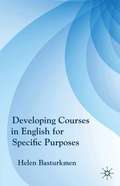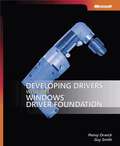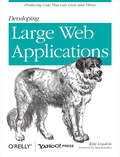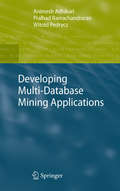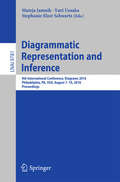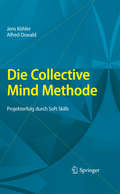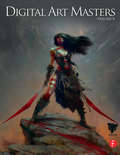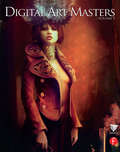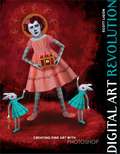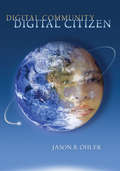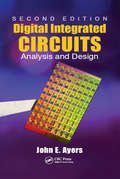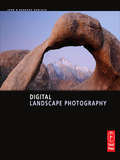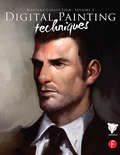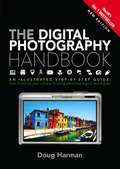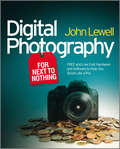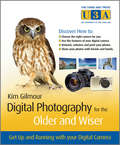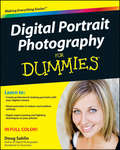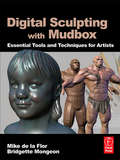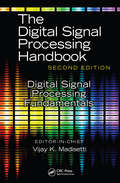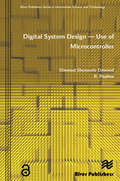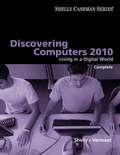- Table View
- List View
Developing Courses in English for Specific Purposes
by Helen BasturkmenPresented in two parts, this book firstly introduces core considerations in ESP course development drawing on examples from a wide range of ESP and EAP courses. Secondly four case studies show how experienced ESP teachers and course developers went about developing courses to meet the needs of their particular learners.
Developing Drivers with the Windows® Driver Foundation
by Penny Orwick Guy Smith<div xmlns="http://www.w3.org/1999/xhtml"><p>Get expert insights for mastering the intricacies of the Windows Driver Foundation. This in-depth reference delivers strategic guidance and practical advice for developing drivers for the Windows platform. Code samples in Microsoft Visual C++\xae.</p></div>
Developing Large Web Applications: Producing Code That Can Grow and Thrive
by Kyle LoudonHow do you create a mission-critical site that provides exceptional performance while remaining flexible, adaptable, and reliable 24/7? Written by the manager of a UI group at Yahoo!, Developing Large Web Applications offers practical steps for building rock-solid applications that remain effective even as you add features, functions, and users. You'll learn how to develop large web applications with the extreme precision required for other types of software.Avoid common coding and maintenance headaches as small websites add more pages, more code, and more programmersGet comprehensive solutions for refining HTML, CSS, JavaScript, PHP, and Ajax for large-scale web applicationsMake changes in one place that ripple through all affected page elementsEmbrace the virtues of modularity, encapsulation, abstraction, and loosely coupled componentsUse tried-and-true techniques for managing data exchange, including working with forms and cookiesLearn often-overlooked best practices in code management and software engineeringPrepare your code to make performance enhancements and testing easier
Developing Multi-Database Mining Applications
by Witold Pedrycz Pralhad Ramachandrarao Animesh AdhikariMulti-database mining has been recognized recently as an important and strategically essential area of research in data mining. In this book, we discuss various issues regarding the systematic and efficient development of multi-database mining applications. It explains how systematically one could prepare data warehouses at different branches. As appropriate multi-database mining technique is essential to develop better applications. Also, the efficiency of a multi-database mining application could be improved by processing more patterns in the application. A faster algorithm could also play an important role in developing a better application. Thus the efficiency of a multi-database mining application could be enhanced by choosing an appropriate multi-database mining model, an appropriate pattern synthesizing technique, a better pattern representation technique, and an efficient algorithm for solving the problem. This book illustrates each of these issues either in the context of a specific problem, or in general.
Diagrammatic Representation and Inference
by Mateja Jamnik Yuri Uesaka Stephanie Elzer SchwartzThe 6th International Conference on the Theory and Application of Diagrams - Diagrams 2010 - was held in Portland, USA in August 2010. Diagrams is an international and interdisciplinary conference series, which continues to present the very best work in all aspects of research on the theory and application of diagrams. Some key questions that researchers are tackling concern gaining an insight into how diagrams are used, how they are rep- sented, which types are available and when it is appropriate to use them. The use of diagrammatic notations is studied for a variety of purposes including communication, cognition, creative thought, computation and problem-solving. Clearly, this must be pursued as an interdisciplinary endeavor, and Diagrams is the only conference series that provides such a united forum for all areas that are concerned with the study of diagrams: for example, architecture, arti?cial intelligence,cartography,cognitivescience,computer science,education,graphic design, history of science, human-computer interaction, linguistics, logic, ma- ematics, philosophy, psychology, and software modelling. The articles in this volume re?ect this variety and interdisciplinarity of the ?eld.
Die Collective Mind Methode
by Jens Köhler Alfred OswaldWährend jeder Projektmanager Planung, Budgetierung und Qualitätsmanagement beherrscht, betritt er bei der Gestaltung der Soft Skills wie Kommunikation und Wissensaustausch häufig Neuland. Wie diese Soft Skills mit Methoden zur Nachvollzieh- und Messbarkeit des Collective Mind beherrschbar werden, vermitteln die Autoren in diesem Band. Bildung und Umsetzung des Collective Mind in zielorientiertes Handeln trägt dabei entscheidend zum Projekterfolg bei. Projektszenarien, ein Test und Best Practices erhöhen den Praxisbezug des Buches.
Die Online-Redaktion
by Thomas Holzinger Martin SturmerDie inhaltliche Entwicklung des Internets hält mit den technologischen Möglichkeiten kaum mit. Dass Online-Redaktion des öfteren als "Strafkolonie" für unliebsame Mitarbeiter betrachet werden und die technophile Selbstverwirklichung mancher Mitarbeiter, sind nur zwei der Ursachen dafür. In dieser Betriebsanleitung für multimediales Medienschaffen überschreiten die Autoren die Grenzen klassischer Mediengattungen und widmen sich in respektloser Frische der Professionalisierung von Internet-Redaktionen.
Digital Art Masters: Volume 4 (Digital Art Masters Series)
by 3dtotal.ComMeet some of the finest 2D and 3D artists working in the industry today and discover how they create some of the most innovative digital art in the world. More than a gallery book or a coffee table book- Digital Art Masters Volume 4 includes over 50 artists and 900 unique and stunning 2D and 3D digital art. Beyond the breaktaking images is a breakdown of the techniques, challenges and tricks the artists employed while creating stunning imagery. This volume, much like the previous volumes is not your standard coffee table book nor is it our usual how-to-book. This book offers inspiration and insight for the advanced amateur and professional CG artists. The Digital Art Masters series has expanded upon the competition's gallery book concept and has added the insight and experiences of professional CG artists worldwide. Divided into 5 sections, Sci-Fi, Scene, Fantasy, Character and Cartoon, Each featured artist segement will include the thought processes behind creating unique digital images and an artist portfolio for further inspiration. Find your inspiration and discover the tips, tricks and techniques that really work.
Digital Art Masters: Volume 5
by 3dtotal.ComMeet some of the finest 2D and 3D artists working in the industry today and discover how they create some of the most innovative digital art in the world. More than a gallery book or a coffee table book- Digital Art Masters Volume 5 includes over 50 artists and 900 unique and stunning 2D and 3D digital art. Beyond the breath taking images is a breakdown of the techniques, challenges and tricks the artists employed while creating stunning imagery. This volume, much like the previous volumes is not your standard coffee table book nor is it our usual how-to-book. New to this volume will be 5 artist video tutorials. Five artists will specifically detail an aspect of their gallery image from start to finish, offering further technique driven insight and expertise offering 2 ½ hours of additional inspiration. With a click of a mouse, artists willbe able to apply the leading techniques to their own work with access to additional video tutorials, source files, textures and digital brushes at the companion website: http://www.focalpress.com/digital-art-masters/index.html.
Digital Art Revolution
by Scott LigonThere's no question that applications like Photoshop have changed the art world forever. Master digital artists already use these tools to create masterpieces that stretch the limits of the imagination--but you don't have to be a master to create your own digital art. Whether you're a beginner who's never picked up a pen or paintbrush, or a traditional artist who wants to explore everything a digital canvas might inspire, digital artist and arts educator Scott Ligon guides you and inspires you with clear instructions and exercises that explore all the visual and technical possibilities.Featuring the work of 40 of the finest digital artists working today, Digital Art Revolution is your primary resource for creating amazing artwork using your computer.From the Trade Paperback edition.
Digital Community, Digital Citizen
by Jason B. OhlerAn all-inclusive roadmap to citizenship in the 21st Century Best-selling author, educator, and futurist Jason Ohler challenges all readers to redefine our roles as citizens in today’s globally connected infosphere. His text aligns the process of teaching digital citizenship with the ISTE standards definition, and uses an “ideal school board” device to address fears, opportunities, and the critical issues of character education. These issues include: Cyberbullying, “sexting,” and other safety concerns Students’ ability to creatively access and critically assess information Respect and ethics regarding copyrighted information Communicating appropriately in an expanded and public realm
Digital Integrated Circuits: Analysis and Design, Second Edition
by John E. AyersExponential improvement in functionality and performance of digital integrated circuits has revolutionized the way we live and work. The continued scaling down of MOS transistors has broadened the scope of use for circuit technology to the point that texts on the topic are generally lacking after a few years. The second edition of Digital Integrated Circuits: Analysis and Design focuses on timeless principles with a modern interdisciplinary view that will serve integrated circuits engineers from all disciplines for years to come. Providing a revised instructional reference for engineers involved with Very Large Scale Integrated Circuit design and fabrication, this book delves into the dramatic advances in the field, including new applications and changes in the physics of operation made possible by relentless miniaturization. This book was conceived in the versatile spirit of the field to bridge a void that had existed between books on transistor electronics and those covering VLSI design and fabrication as a separate topic. Like the first edition, this volume is a crucial link for integrated circuit engineers and those studying the field, supplying the cross-disciplinary connections they require for guidance in more advanced work. For pedagogical reasons, the author uses SPICE level 1 computer simulation models but introduces BSIM models that are indispensable for VLSI design. This enables users to develop a strong and intuitive sense of device and circuit design by drawing direct connections between the hand analysis and the SPICE models. With four new chapters, more than 200 new illustrations, numerous worked examples, case studies, and support provided on a dynamic website, this text significantly expands concepts presented in the first edition.
Digital Landscape Photography (Digital Photography Ser.)
by John and GerlachPhotographing landscape with a film camera is different than with a digital camera. There are several books on the market that cover landscape photography, but none of them are specifically for the digital photographer. This book is what you are looking for! Digital Landscape Photography covers:* equipment such as accessories and lenses* exposure from shutter speed to common mistakes* shooting * light and its importance* composing your perfect photo* printing* and a special section on specific subjects such as waterfalls and sunrisesDigital Landscape Photography, written by experts that have been shooting outdoors for decades, is a fresh look at current ways to shoot landscapes by making the most of digital format.
Digital Painting Techniques: Masters Collection
by 3dtotal.ComDiscover the tips, tricks and techniques that really work for concept artists, matte painters and animators. Compiled by the team at 3dtotal.com, Digital Painting Techniques, Volume 1 offers digital inspiration with hands-on insight and techniques from professional digital artists. More than just a gallery book - within Digital Painting Techniques each artist has written a breakdown overview, with supporting imagery of how they made their piece of work. Beginner and intermediate digital artists will be inspired by the gallery style collection of the finest examples of digital painting from world renowned digital artists. Start your mentorship into the world of digital painting today with some of the greatest digital artists in the world and delve into professional digital painting techiques, such as speed painting, custom brush creation and matte painting. Develop your digital painting skills beyond the variety of free online digital painting tutorials and apply the most up to date techniques to your digital canvas with Digital Painting Techniques for Animators.
Digital Photography For The Over 50s: Teach Yourself
by Peter CopeDo you want to get to grips with your camera? Do you want to take some great photos and make them even better using your computer?Do you want to learn how to create great photo albums, share photos on the internet, even create slideshows to share with family and friends?Teach Yourself Photography for the Over 50s shows you how to choose a digital camera, become familiar with its functions and use it to produce some memorable photos. The book uses clear instructions, useful hints and tips and illustrations to show you all the essential techniques. Avoiding jargon and computerspeak, it also shows you how to use your computer with your camera and explores opportunities for producing great photos without a computer.NOT GOT MUCH TIME?One, five and ten-minute introductions to key principles to get you started.AUTHOR INSIGHTSLots of instant help with common problems and quick tips for success, based on the author's many years of experience.TEST YOURSELFTests in the book and online to keep track of your progress.EXTEND YOUR KNOWLEDGEExtra online articles at www.teachyourself.com to give you a richer understanding of digital photography.FIVE THINGS TO REMEMBERQuick refreshers to help you remember the key facts.TRY THISInnovative exercises illustrate what you've learnt and how to use it.
Digital Photography For The Over 50s: Teach Yourself (Teach Yourself Computing Ser.)
by Peter CopeDo you want to get to grips with your camera? Do you want to take some great photos and make them even better using your computer?Do you want to learn how to create great photo albums, share photos on the internet, even create slideshows to share with family and friends?Teach Yourself Photography for the Over 50s shows you how to choose a digital camera, become familiar with its functions and use it to produce some memorable photos. The book uses clear instructions, useful hints and tips and illustrations to show you all the essential techniques. Avoiding jargon and computerspeak, it also shows you how to use your computer with your camera and explores opportunities for producing great photos without a computer.NOT GOT MUCH TIME?One, five and ten-minute introductions to key principles to get you started.AUTHOR INSIGHTSLots of instant help with common problems and quick tips for success, based on the author's many years of experience.TEST YOURSELFTests in the book and online to keep track of your progress.EXTEND YOUR KNOWLEDGEExtra online articles at www.teachyourself.com to give you a richer understanding of digital photography.FIVE THINGS TO REMEMBERQuick refreshers to help you remember the key facts.TRY THISInnovative exercises illustrate what you've learnt and how to use it.
Digital Photography Handbook
by Doug Harman David JonesIn the last few years digital cameras and "digital darkrooms" in the form of computers and image manipulation software have revolutionized modern photography. Truly professional results are tantalizingly within reach of all--and The Digital Photography Handbook shows you how to combine photographic flair with digital expertise to achieve them. Part one looks at the cameras, the lenses and other hardware accessories, explains the technology behind them and helps you choose exactly what you need. Part two explores the art of photography itself, from composing a shot to considerations such as depth of field, focus or exposure. It also examines a series of themes such as landscapes, weddings and holidays providing tips and ideas for how to photograph them. Part three moves into the "digital darkroom". Here, expert instruction will give you the confidence to correct common problems and get the most out of your images, while a series of masterclasses focuses on professional image manipulation techniques and artistic effects, breaking them down into step-by-step stages for you to follow. Finally, part four looks at printing your photographs--whether to paper or on to the web. For those interested in taking their photography a little further, it explores building a portfolio and offers advice on copyright and selling your pictures.In this new, updated edition Doug Harrman includes the very latest developments in digital technology, equipping you with everything you need to become an accomplished 21st-century photographer.
Digital Photography for Next to Nothing
by John LewellTake photos like a pro without breaking the bank by using FREE and nearly FREE software and hardware explained in this book.Get professional looking shots from a low-cost cameraSave money by building your own lighting rigs, tripods, monopods and stabilisers for next to nothingLearn how to use older lenses on modern digital cameras, and make your own macro lens, lens hoods, flash diffusers, flash concentrators, decorative Bokeh effect lenses and moreUse dozens of FREE and low cost photo applications for processing, viewing, cataloguing, editing, creating HDR, and photo stitchingBuild powerful photography processing and editing suites with free software and plugins that go head to head with expensive tools like Adobe Photoshop and Lightroom
Digital Photography for the Older and Wiser
by Kim GilmourHelpful, easy-to-follow guide for new digital photographers over the age of 50Digital photography is a fun and exciting hobby, but digital cameras can be overwhelming and daunting to a newcomer. If you're entering the digital photography world as an older adult--and wondering about which digital camera will meet your needs--this straightforward, helpful book is for you.Written in full colour with lots of screenshots and clear, easy-to-read type, this friendly guide assumes no previous experience in digital photography and walks you through the subject of digital photography from start to finish: selecting which type of digital camera is right for you, understanding the seemingly endless jargon, benefiting from valuable photograph tips, and much more.Provides guidance for purchasing your digital camera and deciphers the common jargon that is used in the fieldWalks you through all the features and functions of a digital cameraReveals top photography tipsExplains how to retouch, enhance, and print your photosDemonstrates easy ways to share photos with friends and familyPrepare properly, enjoy the freedom, and maybe even show the family a thing or two with this fun and practical guide!
Digital Portrait Photography For Dummies
by Doug SahlinA full-color guide to the art of digital portrait photographyPortrait photography entails taking posed photographs of individuals or set scenery and is the most common photo style among the most novice photography hobbyist to the most advanced photographer. With this easy-to-understand guide, bestselling author and professional photographer Doug Sahlin walks you through the best techniques for getting professional-quality digital portraits.Packed with hundreds of full-color photos and screen shots, this book discusses best practices for taking formal portraits, wedding photos, event photos, casual photos, and more. You'll examine the difference between using the built-in flash and natural lighting and take a look at the benefits of upgrading to a photo lighting kit and pro backdrop. Portrait photography is the most popular style of photography Features helpful information for everyone from beginner hobbyists to advanced photographers Shares insider tips for selecting equipment and choosing from the various tools for portrait photographyWalks you through working with a wide range of subjects, including children, pets, and wildlifeDiscusses lighting and editing imagesTakes a look at ways to create a portrait that is suitable for framingMake sure your subjects are ready for their close ups with this fun and friendly guide to digital portrait photography.
Digital Sculpting with Mudbox: Essential Tools and Techniques for Artists
by Bridgette Mongeon Mike de la FlorDigital sculpting is the use of tools to push, pull, smooth, grab, pinch or otherwise manipulate a digital object as if it were made of a real-life substance such as clay. Mudbox is the premier sculpting solution for digital artists, in that it allows them to naturally and easily sculpt detailed, organic characters and models in a way that feels like traditional sculpting.This book guides CG professionals through the process of creating amazing digital sculptures using the Mudbox arsenal of ground-breaking digital sculpting and 3D painting tools, and porting the models into their Maya or Max work.Artists will explore tried and true, traditional, sculpting techniques and learn to apply them to digital sculpting. A series of in-depth tutorials are incluced, each challenging them with progressively more complex models as they go on.Unique to this book are topics specific to fine art sculptors transitioning from traditional sculpting to digital sculpting. information found nowhere else for professional sculptors shows them how to successfully integrate digital sculpting into their workflow.Associated web site with: support files, models, materials, and textures for completing the tutorials in the book.
Digital Signal Processing Fundamentals (The Digital Signal Processing Handbook, Second Edition)
by Vijay MadisettiNow available in a three-volume set, this updated and expanded edition of the bestselling The Digital Signal Processing Handbook continues to provide the engineering community with authoritative coverage of the fundamental and specialized aspects of information-bearing signals in digital form. Encompassing essential background material, technical details, standards, and software, the second edition reflects cutting-edge information on signal processing algorithms and protocols related to speech, audio, multimedia, and video processing technology associated with standards ranging from WiMax to MP3 audio, low-power/high-performance DSPs, color image processing, and chips on video. Drawing on the experience of leading engineers, researchers, and scholars, the three-volume set contains 29 new chapters that address multimedia and Internet technologies, tomography, radar systems, architecture, standards, and future applications in speech, acoustics, video, radar, and telecommunications. Emphasizing theoretical concepts, Digital Signal Processing Fundamentals provides comprehensive coverage of the basic foundations of DSP and includes the following parts: Signals and Systems; Signal Representation and Quantization; Fourier Transforms; Digital Filtering; Statistical Signal Processing; Adaptive Filtering; Inverse Problems and Signal Reconstruction; and Time–Frequency and Multirate Signal Processing.
Digital System Design - Use of Microcontroller: Use Of Microcontroller (River Publishers Series In Signal, Image And Speech Processing Ser.)
by Shenouda Dawoud R. PeplowEmbedded systems are today, widely deployed in just about every piece of machinery from toasters to spacecraft. Embedded system designers face many challenges. They are asked to produce increasingly complex systems using the latest technologies, but these technologies are changing faster than ever. They are asked to produce better quality designs with a shorter time-to-market. They are asked to implement increasingly complex functionality but more importantly to satisfy numerous other constraints. To achieve the current goals of design, the designer must be aware with such design constraints and more importantly, the factors that have a direct effect on them.One of the challenges facing embedded system designers is the selection of the optimum processor for the application in hand; single-purpose, general-purpose or application specific. Microcontrollers are one member of the family of the application specific processors.The book concentrates on the use of microcontroller as the embedded system?s processor, and how to use it in many embedded system applications. The book covers both the hardware and software aspects needed to design using microcontroller.The book is ideal for undergraduate students and also the engineers that are working in the field of digital system design.Contents• Preface;• Process design metrics;• A systems approach to digital system design;• Introduction to microcontrollers and microprocessors;• Instructions and Instruction sets;• Machine language and assembly language;• System memory; Timers, counters and watchdog timer;• Interfacing to local devices / peripherals;• Analogue data and the analogue I/O subsystem;• Multiprocessor communications;• Serial Communications and Network-based interfaces.
Digital Wedding Photographer's Planner
by Kenny KimA full-color reference to planning for and executing a successful wedding day shootWedding photography has become a major industry, and the number of photographers getting into this field is rapidly increasing--making it even more competitive. Written by top wedding photographer, Kenny Kim, this full-color reference walks you through all the major (and minor) steps involved in planning and organizing a successful wedding day shoot.You'll get unique advice on everything from your initial meeting with the engaged couple to the final presentation of the commemorative book. Packed with checklists, schedules, etiquette tips, and much more, this book is an essential wedding photography resource for every wedding photographer.Provides detailed coverage of all the major and minor steps in preparing for a successful wedding day shootExplores preparation for every detail of taking unique and memorable wedding day photosSpans the initial meeting with the couple all the way to presenting them with their photo albumReassures you of your preparation, using checklists, schedules, etiquette tips, answers to questions, and moreFrom rings and vows to dancing and "wows", this resource will help you prepare to capture every moment of a couple's special day.
Discovering Computers 2010: Living in a Digital World, Complete
by Gary B. Shelly Misty E. VermaatDiscovering Computers 2010; Complete, Living in a Digital World provides students with a current and thorough introduction to computers by integrating the use of technology with the printed text.
